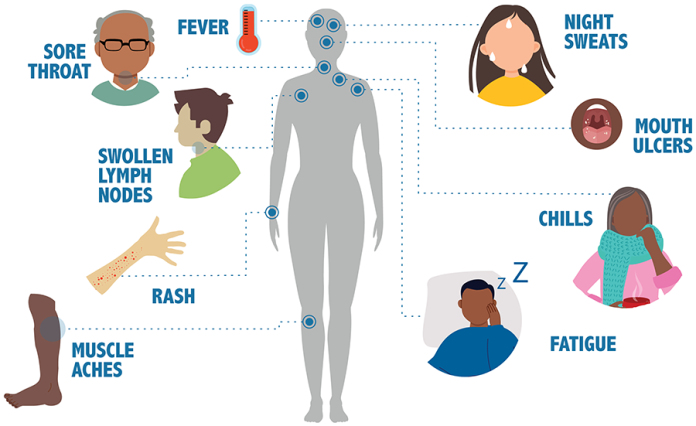At 1.3 per cent prevalence rate (NAIIS Report 2018) the Federal Government said over 1.6 million positive people are on treatment in Nigeria, inclusive of over 50,000 children who might have been infected through the Mother-to-Child Transmission.
This has made Nigeria to align with the global community in the pursuit of the global target of achieving epidemic control and ending HIV/AIDS by 2030.
National Coordinator, National AIDS, Viral Hepatitis and STIs Control Programme (NASCP), Federal Ministry of Health, Adebobola Bashorun, said at a press conference in Abuja that Nigeria has achieved 94-90-96 of the global 95- 95-95 UNAIDS target for HIV.
Bashorun said UNAIDS, a few years ago, set 95-95-95 goal as part of effort to achieving epidemic control of HIV/AIDS by 2030.
“This target was for 95 per cent of the people who are living with HIV to know their HIV status; 95 per cent of the people who know that they are living with HIV being put on lifesaving Anti-Retroviral Therapy (ART); and 95 per cent of people who are on treatment being virally suppressed.
“We are about to exceed that target in Nigeria. So far, we have achieved 94-90-96 target. This means we have succeeded in getting 94 per cent of the people to know their HIV status; 90 per cent of the people who know they are living with HIV put on lifesaving ART; and 96 per cent of them have successfully gained virally suppression.
“About 50,676 children living with HIV (CLHIV) are currently on treatment. This, evidently, represents 32 per cent of the estimated CLHIVs. Undoubtedly, Nigeria is on track to achieving the 2030 target of global HIV epidemic control. Our prevalence rate stands at 1.3 per cent. This is good compare to some countries with over 10 per cent. But the challenge we have is the size of our population. That’s why we have the highest burden in the world.
“As march to 2030 global target, there’s need for sustainability of the gains we have made over the period. We need to get the data right so it can guide our response to the challenge.”
He, however, expressed optimism that the newly launched Prevention of Mother-to-Child Transmission (PMTCT) Standard Operational Procedure (SOP) document for health facilities will further assist in bringing down the figure of PMTCT cases.
Minister of State for Health, Tunji Alausa, who launched the documents, appreciated the efforts of all the stakeholders that culminated in the improved indices of HIV/AIDS in Nigeria, particularly in the area of PMTCT.
He reminded them that more work lies ahead, particularly as the world race against time in pursuit of the global target of achieving epidemic control and ending HIV/AIDS by 2030.
Chairman, House of Representatives Committee on AIDS, Malaria and Tuberculosis (ATM), Amobi Ogah, advocated a new approach in funding of HIV/AIDS cases in Nigeria.
He said: “There’s urgent need for us to reduce foreign financial dependence for HIV related interventions by, at least, 50 per cent. This will enable us have a backup and sustainability plan in case of any unexpected withdrawal of financial support by international partners.”
Ogah appealed to religious and community leaders to take up the HIV response cases, so they can help the government meet the 2030 global target of achieving epidemic control and ending HIV/AIDS by 2030.
Representatives from the World Health Organisation, National Agency for the Control of AIDS, United Nations AIDS, PEPFAR, among others renewed their commitment to the cause of ending HIV/AIDS by 2030.


